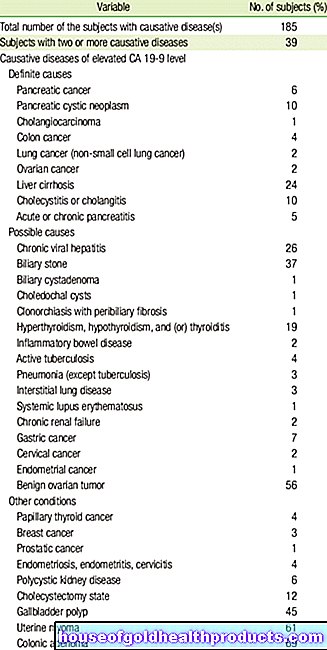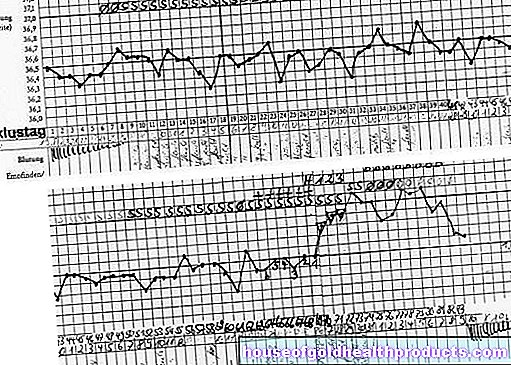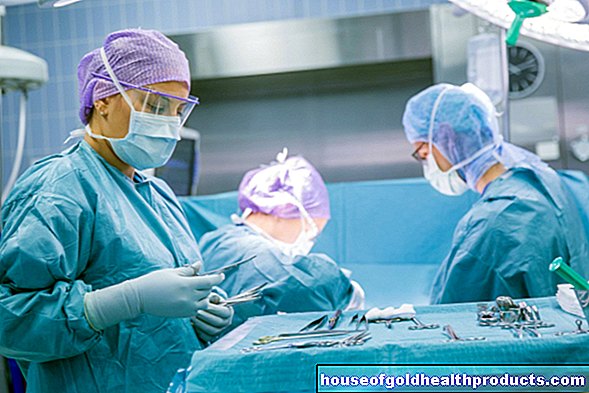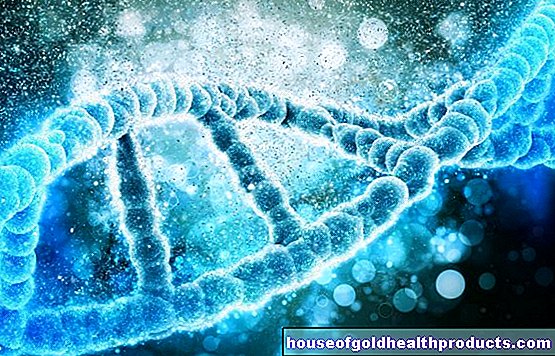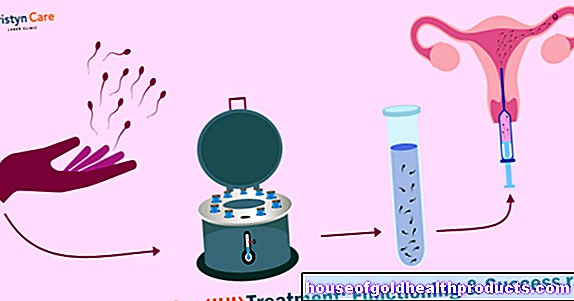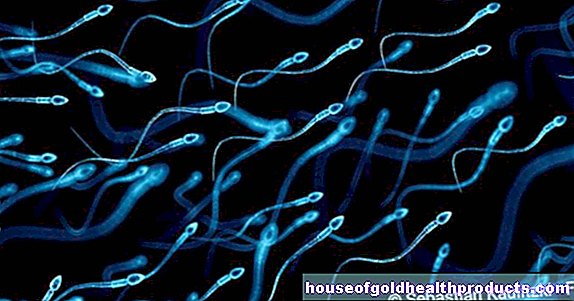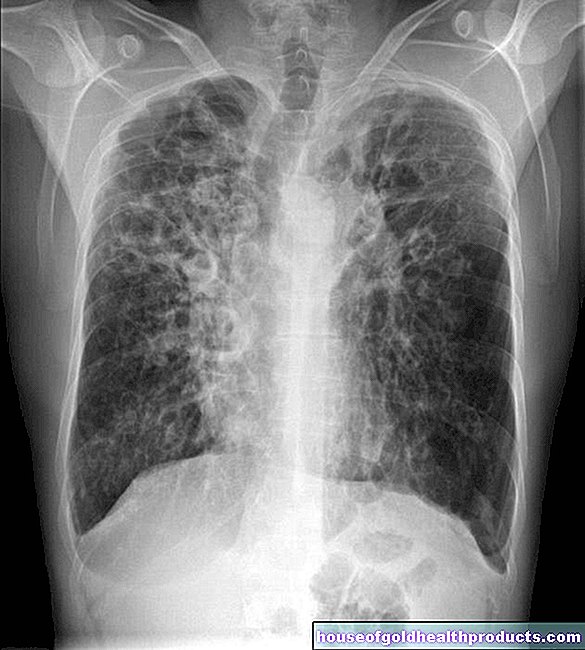Gastric polyps
Marian Grosser studied human medicine in Munich. In addition, the doctor, who was interested in many things, dared to make some exciting detours: studying philosophy and art history, working on the radio and, finally, also for a Netdoctor.
More about the experts All content is checked by medical journalists.Stomach polyps are protuberances from the lining of the stomach inside the stomach. They can occur singly or in bulk and differ in size and shape. Large polyps may cause discomfort, while smaller specimens often go unnoticed. Many gastric polyps are benign, others degenerate and develop into gastric cancer. Read everything you need to know about gastric polyps.
ICD codes for this disease: ICD codes are internationally recognized codes for medical diagnoses. They can be found, for example, in doctor's letters or on certificates of incapacity for work. C16K31
Gastric polyps: description
Stomach polyps are benign mucous membrane growths that protrude from the stomach wall into the stomach cavity. They sometimes occur individually, but in many patients they also occur in groups. Doctors then speak of multiple gastric polyps. If there are a particularly large number of tumors, it may be a so-called polyposis syndrome.
The mucosal tumors can be classified either according to their shape or according to their origin.
Stomach polyps: variable shape
Some polyps sit flat on the gastric mucosa and are only slightly raised (broad-based gastric polyps). Others protrude more spherically or with small fringes (villi) into the stomach cavity. In some cases it seems as if a piece of the stomach wall has been constricted and is only connected to it by a thin stalk (stalked gastric polyps).
Stomach polyps: variable origins
According to their origin, gastric polyps, which arise from glandular tissue in the mucous membrane, are differentiated from other forms. The glandular growths are the most common and are also called adenomas by medical professionals.
Polyps can also arise from other tissue (Peutz-Jeghers syndrome; juvenile polyps) or as a result of inflammation. In some cases, behind a gastric polyp, there is a fluid-filled cavity in a mucosal gland (glandular cyst).
Who gets gastric polyps?
Stomach polyps occur roughly equally in men and women and occur mainly from the age of 60. They are much less common in younger people. Since hereditary factors also play a role in the development of the polyps, several members of a family are sometimes affected.
Stomach polyps: symptoms
Small polyps often go unnoticed. Only from a certain size solve the nature are and can also occur with many other diseases. The following symptoms are possible signs of gastric polyps:
- Bloating
- Loss of appetite
- Feeling of pressure and / or pain in the upper abdomen
Occasionally the polyps bleed. Heavy bleeding may lead to vomiting of blood (hematemesis) or black stools (tarry stools, melena).
Patients with gastric polyps also often suffer from inflammation of the stomach lining (gastritis) at the same time, which in turn can be associated with nausea.
Complications
In most cases, gastric polyps do not cause severe symptoms. However, they are not entirely harmless. Because although these are benign mucous membrane growths, some can degenerate and turn into stomach cancer. Adenomatous polyps in particular are considered a risk factor: about one in ten develops into a malignant stomach tumor.
Stomach polyps: causes and risk factors
The exact cause of gastric polyps is not yet known. However, it is known that decreased gastric juice production increases the risk of polyps. In addition, mucosal tumors are also caused by inflammation, for example in the case of gastritis.
In many cases there is also a familial predisposition to gastric polyps. A special case in this regard is the polyposis syndrome. With this hereditary disease, thousands of small polyps form in the entire gastrointestinal tract, which show a clear tendency to degenerate.
Last but not least, external factors seem to play a role in the development of the polyps. Smoking and alcohol consumption promote the growth of the mucous membrane. A high-fat, low-fiber diet also has a bad impact.
Gastric polyps: examinations and diagnosis
Stomach polyps can be detected with a gastroscopy. Because many polyps do not cause symptoms for a long time, they are often discovered only by chance during a routine gastroscopy. In the case of long-term, unspecific complaints in the upper abdomen, this examination is recommended anyway in order not to overlook possible stomach cancer.
In addition, a tissue examination (biopsy) of the polyps is useful. To do this, the entire polyp is usually removed during the gastroscopy - less often only a small part of it - and examined more closely under the microscope. With this method, the doctor can distinguish benign from malignant growths. An X-ray examination with contrast agent is rarely carried out on the stomach.
Stomach polyps: treatment
If the doctor discovers gastric polyps during a gastroscopy, he usually removes them during the examination. To do this, he introduces special instruments (such as an electric loop or laser) with which he can cut out the polyps. These methods also prevent bleeding.
Larger, broad-based polyps may have to be operated on. To do this, the doctor opens the abdominal wall and removes a small part of the stomach wall.
Polyps should always be completely removed. On the one hand, some gastric polyps can degenerate, on the other hand, gastric cancer in rare cases looks similar to polypoid gastric mucosal changes.
Gastric polyps: disease course and prognosis
With a correctly performed gastroscopy, complications are extremely rare. Bleeding or injuries to the stomach wall only occur in isolated cases, which very rarely require an operation.
Many patients return to gastric polyps some time after successful treatment. Those affected should therefore have a gastroscopy once or twice a year as a check-up.
Tags: eyes Diseases pregnancy birth




